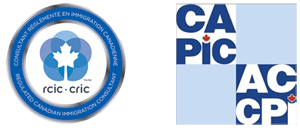The Canadian government is divided into three levels. Canada is a federation of provinces and a constitutional monarchy. These provinces are comprised of counties, which are comprised of cities.
Canada is one of the most democratic countries in the world. The Canadian government is responsible for the welfare of its citizens. Any government is accountable for providing fundamental necessities to its population. A government is responsible for providing clean water, adequate shelter, food, and health care to its inhabitants. Above all, a government’s most important responsibility is to preserve law and order in its jurisdiction.
Canada is one of the world’s largest countries, so, it would be difficult for it to maintain law and order in such a large area. As a result, the Canadian government structure comprises three layers for optimal nation administration.
The federal government is made up of the Queen, the Prime Minister, and the House of Commons at the top of the pyramid. Then there’s the Senate. In the middle of the pyramid are the provincial and territorial governments.
At the same time, the pyramid’s base is formed by city local governments.
The Constitution of Canada
The Canadian constitution is the source of power for the country’s government structure. The nature, functions, and restrictions of the Canadian governance system are outlined in the Canadian constitution.
It outlines all Canadian citizens’ fundamental rights. It serves as a compass for both the federal and provincial governments.
With the adoption of The Constitution Act, 1867, Canada gained its independence. The legislative, executive, and judicial branches of the Canadian government are all given explicit powers in the constitution.
H3: The Federal Canadian Government
Despite being a democratic country, Canada is a monarchy. Every democratically elected government in Canada draws its power from the Canadian people under the Constitutional Monarchy system. Elizabeth II, the Queen of the United Kingdom, is also the Queen of Canada. As a result, the Canadian government can be described as a constitutional monarchy. However, it should be recognized that it acts in the Queen’s name.
A Governor-General is appointed by the Queen to represent her in Canada. On the advice of the Prime Minister, the Queen appoints the Governor-General of Canada. The Governor-General serves a five-year tenure.
The Senate and House of Commons
The House of Commons has 338 seats. The legislative branch wields significant legislative authority. Each electoral district is represented by one representative in the House of Commons. In a general election, political parties run candidates for that seat in the House of Commons. Individuals can also run for election as independent candidates. The first-past-the-post system is used to elect members of the House of Commons. To be elected under this system, a candidate must receive more votes than the other. To win an election, you don’t need to receive 50% of the vote. The prime minister, who is the leader of the largest political party, is chosen by the elected representatives.
The provincial government
The province or territorial government plays an essential role in the Canadian government structure. Semi-autonomous provincial or territorial legislatures exist at the provincial level. They have their own Lieutenant Governor who serves as the crown head’s representative. A unicameral system of government governs all of Canada’s provinces. They used to have a bicameral government, but the upper house was phased out gradually.
H3: The municipal government
In the Canadian government structure, the municipal government is the third tier. The general population of the concerned locality votes to elect their local council at the municipal level in Canada. The mayor is then chosen by the council members as a whole, he becomes the chief executive of the municipality. The constitution of Canada empowers provinces and territories to establish local governments. Currently, Canada has around 3,700 municipal governments. They are in charge of supplying the communities with local services and facilities.
Functions of the Canadian Government
The functions of the Canadian government are clearly defined. There is a clear understanding of which government agencies are responsible for specific concerns.
The federal government is in charge of matters that impact the entire country. Federal government issues include national security, citizenship, and immigration, to name a few. Federal departments also have responsibility for international relations and trade with foreign countries.
The management of respective provinces or territories is the responsibility of the provincial or territorial governments. These governments will be able to concentrate on issues that impact them. As a result, they are able to pay close attention to the requirements and desires of their particular regions. Education, healthcare, transportation, and other such topics are top priorities for them.
Municipal governments are local administrations that are restricted to a specific city, town, or village. Local streets, sanitation, and other locally concentrated issues are among their areas of action.
Bottom line,
The government of Canada has a very diverse and dynamic structure. It reflects the well-oiled government institutions that have existed for millennia. Since 1785, the introduction of a constitutional government structure has left an indelible effect on the entire system. The government and opposition parties collaborate for the welfare of society.
Check this out to learn about the various institutions and people who assist in the governance the Canadian society.
Contact Hillcrest Immigration & Consulting Corporation to find out more about the Canadian government.


